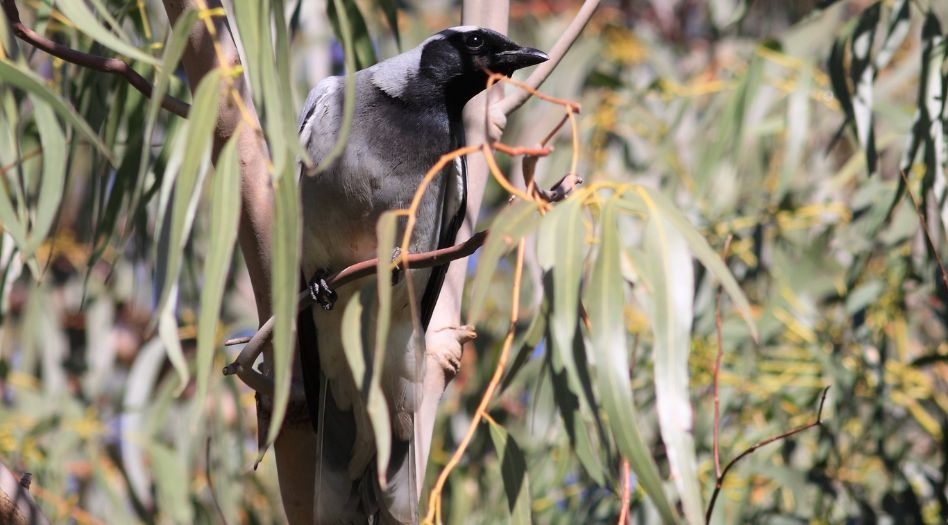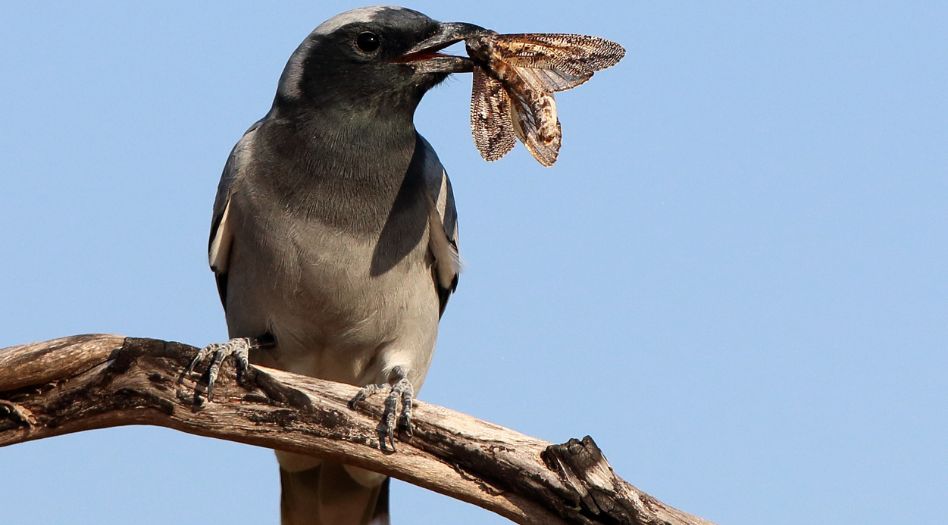Bird Overview
Cuckoo-shrikes are neither cuckoos nor shrikes, but are called so because their feathers have similar patterns to those of cuckoos and their beak shape resembles that of shrikes.
Songs and Calls
The call most often heard is a soft churring, often being described as a warbling “creearck”. Bird call recorded by: Marc Anderson
Identification
Black-faced Cuckoo-shrikes have a black face and throat, blue-grey back, wings and tail, and white underparts. They are slender, attractive birds. They have a curious habit of shuffling their wings upon landing, a practice that gave rise to the name “Shufflewing”, which is often used for this species. This shuffling is also carried out by most other species in this family. Young birds resemble the adults, except the black facial mask is reduced to an eye stripe.
Location
The Black-faced Cuckoo-shrike is widespread and common. Outside the breeding season, large family groups and flocks of up to a hundred birds form.
Habitat: Forest, Woodland, Urban
Habitat
The Black-faced Cuckoo-shrike is found in almost any wooded habitat, except for rainforests. It is also familiar in many suburbs, where birds are often seen perched on overhead wires or television aerials.
Behaviour
In flight, the Black-faced Cuckoo-shrike appears rather lazy, as it gives a few flaps of its wings, then glides with them by its side for a second or two; during this glide, the bird loses elevation until it flaps again, giving the flight its characteristic undulating pattern.
Black-faced Cuckoo-shrikes sometimes form mobile flocks of dozens of birds, each flying in this manner but not synchronised with the other birds.
Foraging Black-faced Cuckoo-shrikes may hover in the wind, plucking invertebrates from the foliage of trees and shrubs without alighting.
The call most often heard is a soft churring, often being described as a warbling “creearck”.
Partially nomadic; some northwards migrations.
Feeding
Black-faced Cuckoo-shrikes feed on insects and other invertebrates. These may be caught in the air, taken from foliage or caught on the ground.
They also eat some fruits and seeds.
Breeding
Black-faced Cuckoo-shrikes may mate with the same partner each year, and may use the same territories year after year. The nest is remarkably small for the size of the bird. It is a shallow saucer of sticks and bark, bound together with cobwebs. Both partners construct the nest and care for the young birds.
The nestling period is 21 days. The breeding season is from August to February; varies in more arid areas.



